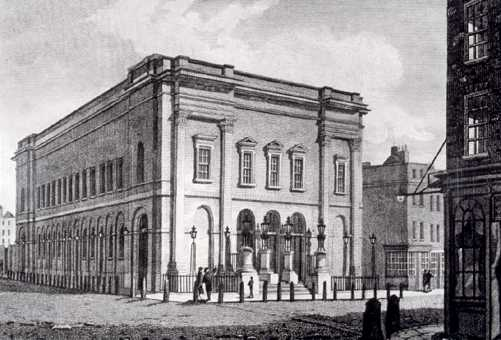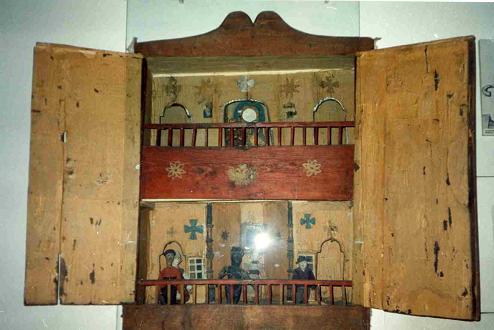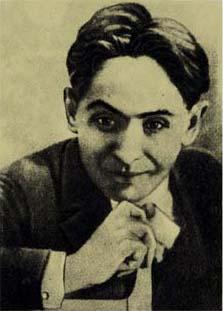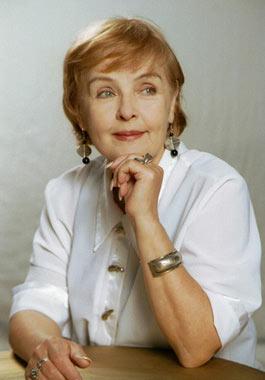
- •Рекомендовано до друку
- •Unit 1. Theatre as the form of art and entertainment
- •3. Complete the sentences choosing the correct variant. Translate the sentences into Ukrainian.
- •4. Complete the sentences choosing the correct variant. Translate the sentences into Ukrainian.
- •Theatre
- •8. Match the two parts of the sentences.
- •9. Match the words in column a with their equivalents in column b. Translate them.
- •10. Fill in the gaps in the sentences below using the words and word combinations from column a in the previous exercise.
- •11. Parts of a stage. Match each part of a stage on the left with its definition on the right
- •12. Actors. Complete the sentences choosing the correct answer. Translate the sentences into Ukrainian.
- •13. People in a play. Match the professions on the left with a definition on the right.
- •14. Match the types of plays with their definitions
- •16. Work in pairs. Write out from the text above the words and word combinations belonging to the following categories:
- •17. Work in pairs. Match the definitions of functions below with the artistic staff professionals in exercise 15.
- •18. Work in pairs. Discuss the artistic staff and technical theatre personnel needed to produce and stage a play. What kind of responsibilities do each of the production team members have?
- •19. Match the words in column a with their equivalents in column b. Give Ukrainian equivalents to the following words.
- •20. A. Useful adjectives for describing works and performances
- •21. Read the dialogues in parts, noting what expressions are appropriate in the situations. Reproduce the dialogues with another student in class.
- •22. Translate, reproduce and learn by heart:
- •23. Translate into English using topical vocabulary.
- •Unit 2 contemporary theatre in britain
- •Contemporary theatre in britain
- •2. Answer the following questions.
- •3. Fill in the blanks with the words listed below. Some of the words may be used more than once.
- •4. Work in pairs. Read the beginning of the text on four London theatres. What do you think the text will focus on?
- •Which of the theatres
- •B. Lyttelton theatre
- •C. Cottesloe theatre
- •D. Soho theatre
- •6. Work in pairs. Find in the texts the words meaning:
- •7. Watch the documentary film “The Drury Lane Theatre” and do the following tasks.
- •1. The history of the theatre.
- •2. The interior of the theatre.
- •3. Famous actors and directors.
- •Unit 3 theatre in ukraine.
- •1. Read the text and be ready to discuss it in the class. Give a good literary translation of the text.
- •The History of Ukrainian Theater
- •2. What or who is identified by the following?
- •3. Answer the questions.
- •4. Read the text and make a chart for b. Stupka’s life Bohdan Stupka
- •Additional texts for reading and discussing
- •Theatre in the United States
- •Broadway
- •The Phantom of the Opera
- •Topical Vocabulary. A Visit to the Theatre
- •Types of Theatre
- •Production Team
- •Література
1. The history of the theatre.
2. The interior of the theatre.
3. Famous actors and directors.
Many of the most famous actors in English history have given performances at the Drury Lane Theatre in London, England. Originally built in 1663, the present building was erected in 1812, making it London’s oldest active theater.
Drury Lane Theatre, playhouse in London, on Russell St., not far from Drury Lane. The original building, properly known as the Theatre Royal, was built under a royal patent in 1663 by the playwright Thomas Killigrew for his company, the King's Servants. Two years later the actor Nell Gwyn, who was later the mistress of Charles II, made her debut at Drury Lane. After the theater was badly damaged by fire in 1672, a new one was built from designs by Sir Christopher Wren and opened in 1674. Between 1695 and 1746 the theater was involved in a constant struggle against financial difficulties, and its reputation suffered because of the superior offerings of rival playhouses.
I n
1746 management was assumed by the actor David Garrick; the following
30 years are considered the golden age of Drury Lane. After Garrick
retired in 1776, the theater was managed by the playwright Richard
Sheridan, who presented his own comedies and later brought to stardom
the actor Sarah Siddons. A new theater was built in 1791, and it was
replaced by the present structure in 1812, making it the oldest
theater in England still in use. From 1814 to 1820 Drury Lane
audiences saw the performances of Edmund Kean, who appeared in many
of Shakespeare's plays. Subsequently the theater was used for a
variety of productions, including operas and pantomimes.
n
1746 management was assumed by the actor David Garrick; the following
30 years are considered the golden age of Drury Lane. After Garrick
retired in 1776, the theater was managed by the playwright Richard
Sheridan, who presented his own comedies and later brought to stardom
the actor Sarah Siddons. A new theater was built in 1791, and it was
replaced by the present structure in 1812, making it the oldest
theater in England still in use. From 1814 to 1820 Drury Lane
audiences saw the performances of Edmund Kean, who appeared in many
of Shakespeare's plays. Subsequently the theater was used for a
variety of productions, including operas and pantomimes.
Since World War II, Drury Lane has become known as the London home of successful American musical comedies.
Unit 3 theatre in ukraine.
1. Read the text and be ready to discuss it in the class. Give a good literary translation of the text.
The History of Ukrainian Theater
E
 lements
of theatricality can be traced in Ukrainian folk customs and rites,
games, folk oral literature, and folk dances back to pre-Christian
pagan traditions and rituals. They are especially evident, even
today, in the springvesnianky-haiivky,
the
summer Kupalo festival, and the winter carols and above all in the
ceremony of the Ukrainian wedding. Theatrical entertainment and
participation in many rituals was provided by skomorokhy.
With
the acceptance of Christianity in Ukraine, the Divine Liturgy took on
elements of theatricality, and the church adopted or converted many
pagan rituals for its own purposes. The recorded history of nonritual
Ukrainian theater begins in 1619 with two intermedes staged between
the acts of religious drama. The further development of Ukrainian
theater was influenced by European medieval theater, the Renaissance,
and classicism in the court and in school drama, particularly at the
Kyiv Mohyla Academy, vertep
puppet
theater.
lements
of theatricality can be traced in Ukrainian folk customs and rites,
games, folk oral literature, and folk dances back to pre-Christian
pagan traditions and rituals. They are especially evident, even
today, in the springvesnianky-haiivky,
the
summer Kupalo festival, and the winter carols and above all in the
ceremony of the Ukrainian wedding. Theatrical entertainment and
participation in many rituals was provided by skomorokhy.
With
the acceptance of Christianity in Ukraine, the Divine Liturgy took on
elements of theatricality, and the church adopted or converted many
pagan rituals for its own purposes. The recorded history of nonritual
Ukrainian theater begins in 1619 with two intermedes staged between
the acts of religious drama. The further development of Ukrainian
theater was influenced by European medieval theater, the Renaissance,
and classicism in the court and in school drama, particularly at the
Kyiv Mohyla Academy, vertep
puppet
theater.
Ukrainian secular theater became popular during the 19th century, beginning with the staging of the first Ukrainian-language plays of I.Kotliarevsky and H.Kvitka-Osnovianenko by the Poltava Free Theater in 1819. From the end of the 18th century, Ukrainian landlords organized serf theaters at then-estates, where Ukrainian plays were sporadically performed. The pioneering Ukrainian actors were K.Solenyk, M.Shchepkin, and L.Mlotkovska. In Western Ukraine, amateur secular performances began at the end of the 1840s in Kolomyia, Peremyshl, and Ternopil.
In Russian-ruled Ukraine many amateur and touring theater groups were active by the end of the 1850s. The leaders in setting up amateur troupes were M.Starytsky and I.Karpenko-Kary. Although the 1863 tsarist government circular prohibited the use of the Ukrainian language on stage, the development of Ukrainian amateur theater continued. It reached its apex in the performance in 1873 of M.Lysenko's opera "Christmas Eve", based on N-Gogol's story directed by Starytsky.
The first professional Ukrainian theater was a touring troupe in Austrian-ruled Galicia and Bukovyna. Founded in 1864, it is an important landmark in the evolution of modern Ukrainian theater, and notable for its productions, in Ukrainian only, directed by O.Bachynsky
In 1881 the first touring theater in eastern Ukraine was founded under M. Kropyvnytsky. Touring theaters led by Starytsky (1885) and M. Sadovsky (1888) and Saksahansky's Troupe (1890) followed. Their repertoire consisted mostly of populist-romantic and realistic plays by Kropyvnytsky, Starytsky, and Karpenko-Kary. Censorship did not permit performances of plays with historical and social themes and completely prohibited the staging of plays translated from other languages. Each performance had to include at least one Russian play, and the territory of the touring theaters was limited to Russian-ruled Ukraine.
I n
1905 censorship eased, and Sadovsky was able to organize the first
resident Ukrainian theater in Kyiv in 1907. He successfully produced
Ukrainian operas as well as melodramas and comedies in translation.
n
1905 censorship eased, and Sadovsky was able to organize the first
resident Ukrainian theater in Kyiv in 1907. He successfully produced
Ukrainian operas as well as melodramas and comedies in translation.
I n
March 1917 the Central Rada endorsed the creation of a Theatrical
Committee. Undoubtedly, the boldest innovations in the modernization
of Ukrainian theater were initiated by L.Kurbas, whose early work
developed at Molodyi Teatr (1917-19). In 1920 Kurbas produced an
adaptation of Shevchehko's poem "Haidamakas" for the
Shevchenko First Theater of the Ukrainian Soviet Republic, and H.Yura
founded the Franko New Drama Theater. The leading new Ukrainian
theaters after 1917 also included the Zankovetskaya Theater in Lviv
and the Odesa Drama Theater.
n
March 1917 the Central Rada endorsed the creation of a Theatrical
Committee. Undoubtedly, the boldest innovations in the modernization
of Ukrainian theater were initiated by L.Kurbas, whose early work
developed at Molodyi Teatr (1917-19). In 1920 Kurbas produced an
adaptation of Shevchehko's poem "Haidamakas" for the
Shevchenko First Theater of the Ukrainian Soviet Republic, and H.Yura
founded the Franko New Drama Theater. The leading new Ukrainian
theaters after 1917 also included the Zankovetskaya Theater in Lviv
and the Odesa Drama Theater.
After the institution of Soviet rule all Ukrainian theaters fell under state control. In 1934 socialist-realism was applied to Ukrainian theater. The insistence upon socialist realism resulted in the dominance of contemporary Soviet drama and an almost complete absence of new contemporary European repertoire, a negation of all stylistic variation in performances, and the suppression of any experimentation whatsoever.
Over the past few years the Ukrainian theater has stayed on the wave crest of national revival. At present Ukraine operates 91 drama companies, including "academic theaters", musical drama and puppet theaters, youth theaters, musical comedies. Among theater stars are B. Stupka, B. Kozak, F. Struhnin, A. Rohovtseva, V. Zaklunna and others.
